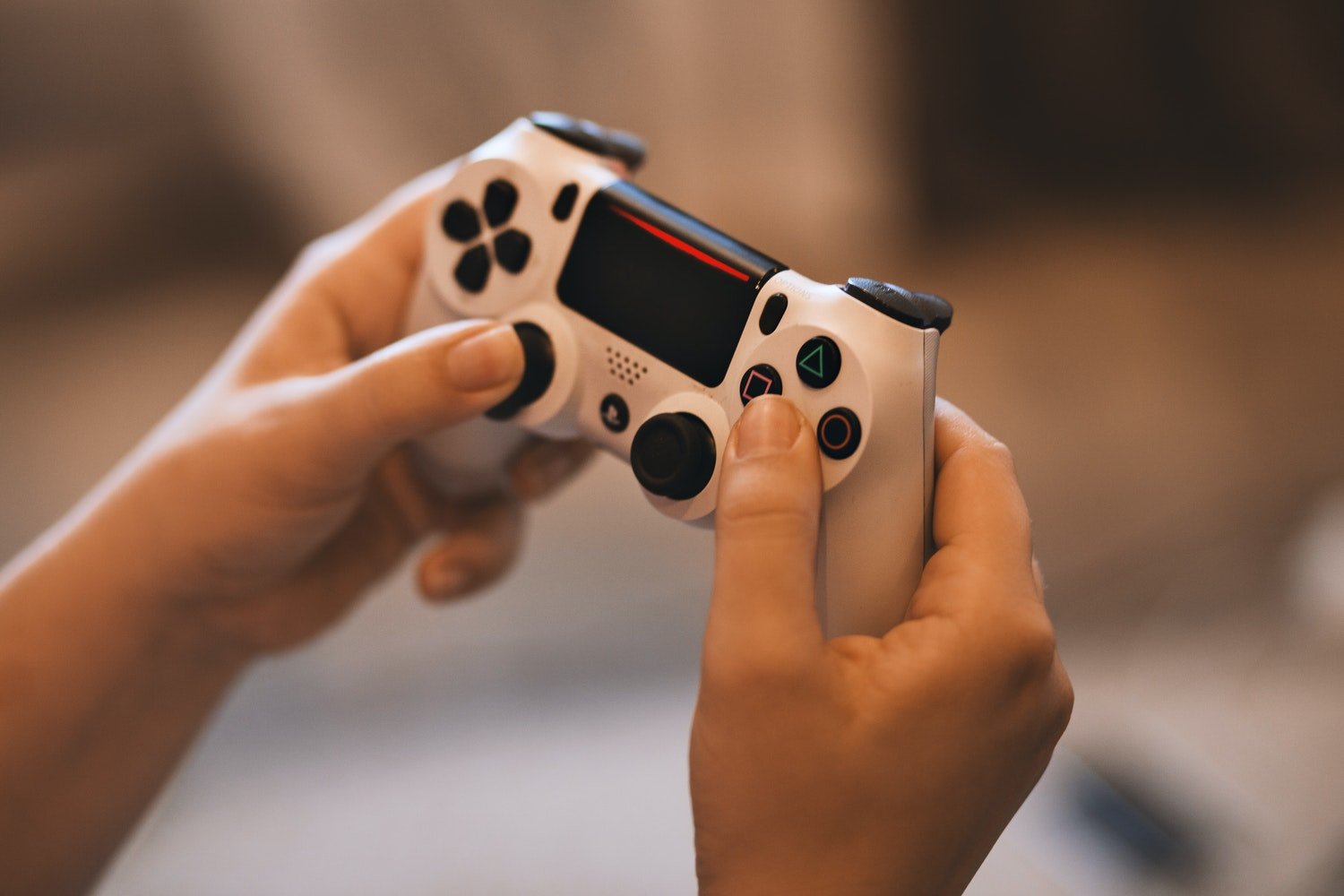Input Lag vs. Response Time: What’s the Difference?
Nothing can sour a game than feeling like the piece is unresponsive to your controls or moving too slow to play. Pressing a button on your controller and feeling like your in-game avatar isn’t matching what your hands do is awful. Input lag, eaten inputs, and low response time may all be assigned blame in this case.
The terminology surrounding gaming issues often sounds similar, like input lag and response time. This leads to confusion that needs to be cleared up, so you can get back to your game.
Despite the similarity of their names, input lag and response time refer to completely different factors. WTFast is highlighting the core differences between input lag and response time issues. From there, we will explain what causes them and what can be done to solve these issues.
What Is Input Lag?
Every game has different controls. Many games — action and fighting games in particular — feature characters or weapons that move at different speeds relative to inputs. This gives heavy-hitting weapons like hammers and bulky characters a sense of physical weight which adds to the game. In fighting games and other competitive games, understanding timing is essential for bettering your form.
This is a conscious design choice by game developers that operates in an intentional way. Other times, because of various issues with onboard equipment, it may take a lengthier time for inputs to register onscreen.
When this sort of delay is consistent, it can be a frustrating but manageable way to play games. When the reaction time of your game seems to vary every second, however, it can your game can become unplayable.
Input lag is measured in ms, in the same way as ping and latency. Whereas the latter two measure the time it takes data packets to travel, input lag tests your input travel time. This is measured from the point of controller input until it is accurately rendered on your monitor. An ideal input lag is 15ms or below, though going above doesn’t necessarily spell doom for your PC.
From a player perspective, input lag reads as a game being unresponsive. A player sends the input and can internally parse the length of time for it to be seen. Input lag generally has two main components: frame rate and V-Sync.
What Causes Input Lag?
When lag is discussed in online gaming, one of the first culprits discussed is the internet connection. A poor connection to servers can cause rubberbanding, frozen screens, missed shots, and in extreme cases, disconnection from the game. Because of this, many gamers are always on the lookout for ways to improve their internet connection. To solve the issue of input lag, however, you will have to look elsewhere.
As stated before, input lag results from two main issues. These are frame rate and vertical synchronization. The reason behind these two affecting your input lag is closely related.
Framerate is the number of frames your monitor represents per second. In order to represent these, they need to be sent from your GPU. A variety of issues can affect your framerate when gaming.
The first is the quality of your graphics card. This is the component that affects your PC’s ability to function and accurately represent your game's graphics. Individual game optimization also affects performance, though this is primarily an issue on the server-side rather than the client-side. The number of background tasks taking up your computer's resources also impacts your ability to render inputs accurately.
Another issue is V-Sync or vertical synchronization. V-Sync is a double-edged sword. While it can contribute to input lag, it does have graphical benefits. It either caps or slows down your monitor's frames per second to accurately show each frame without tearing. Turning off V-Sync improves your input lag but may reduce the overall graphical quality of a game.
The core issue behind input lag is the number of frames per second. The more frames represented, the more accurate your inputs are. Understanding these causes of input lag is essential for the next step: fixing it.
How To Fix Input Lag
Fixing input lag comes down to boosting your frames per second. Ideally, for competitive gaming, you should be searching for a rate of 60FPS or more. Though various elements impact your frames per second, the only hard limit is set by your monitor.
Each monitor has a maximum refresh rate, which measures how many times an image can be changed each second. Most monitors have a standard refresh rate of 60Hz, meaning your frames will be capped at 60. While this may be fine for some, maximizing your total number of frames requires a monitor with a higher rate.
Once your monitor is solved, it’s time to begin solving input lag at its core. We first begin with gameplay optimization, then switch to options that impact graphical fidelity.
The first and easiest step is to close any background tasks you may have. This frees up resources overall.
After this, open your game and navigate to your Task Manager. From here, click on the icon for your game, and set its priority to “High.” This will devote the majority of your resources to running the game.
If your framerate is still lacking, you can lower the graphical settings on the game in its options. If you still need more frames, you can disable V-Sync. This may cause some screen tearing but will accurately represent your inputs on screen.
Even if you optimize your local resources, some games just aren’t optimized well. In this case, it might be the low system resources causing the issues. For connection lag, you’ll need to use a GPN to speed things up. A Gamer’s Private Network will find the easiest, fastest, and most stable route for your data, so connection lag becomes a thing of the past.
What Is Response Time?
Response time sounds like it may relate to player inputs. However, it exists no matter what you do.
We stated previously that a monitor’s refresh rate measures the speed at which it can cycle through frames. Instead, response time measures the length of time it takes individual pixels to change color. While refresh rate affects individual frames, response rate affects the appearance of those frames.
Your monitor cycles through a certain number of frames per second, each lasting a particular number of milliseconds. If your monitor response time is higher than that, the frame will change before the screen colors do. This causes trailing graphics as the game goes forward.
This graphical anomaly is called ghosting, where characters and environments leave temporary shadows behind. This is odd in single-player games, but can severely affect your aiming in multiplayer ones. Unlike input lag, the elements behind and solution to response time is fairly simple.
What Affects Response Time?
Monitors are rarely customizable in the accessible manner PCs are. For this reason, the biggest factor determining response time are the types of panels your monitor uses. It should be noted that monitor designs generally have to choose between graphical richness and quick response times. The majority of monitors fall into one of three categories.
Twisted Nematic screen panels have the fastest response times. However, they generally have weaker color palettes than others. These high-powered gaming monitors tend to be slightly cheaper than the alternatives.
Vertical Alignment screen panels thread the needle between graphical fidelity and high response times. High-quality VA panels are great for multipurpose PCs but are more expensive and may be outperformed in gaming by TN.
In-Plane Switching monitors have the weakest response times but offer the best color on the market. These are ideal for graphic designers, video editors, and digital artists who enjoy gaming. An IPS monitor with the gaming capabilities of the previous two types will likely be extremely costly.
How To Fix Response Time
Because response time relies on balancing graphical fidelity versus color accuracy, there is no single “right” choice for your monitor. Somewhere along the spectrum of vividness and response time, a choice needs to be made to suit personal taste. The main way to fix response time is to simply get a newer monitor.
Upgrading your PC setup is a major commitment, and many may want to keep a monitor through its natural lifespan. Fortunately, most monitors have a way to improve response time.
In order to easily improve response time, you’ll need to enter the onscreen display settings for your monitor. From there, you should see an option that allows for Response Time Overdrive or something similar. Enabling this optimizes your monitor's function for response time safely.
Not all monitors allow for this. In cases like this, the only true solution is changing your gaming setup.
Response Time and Input Lag
Improving your gaming experience isn’t just about increasing one binary metric for success. Balancing between frame rate and graphical fidelity is important. Balancing quick response times and richness of visuals can be challenging. However you prioritize these settings, know that there is no single perfect solution. Control ultimately lies in your hands.
Sources:


